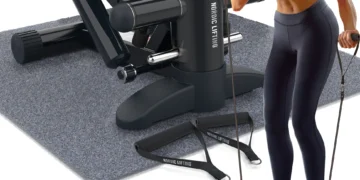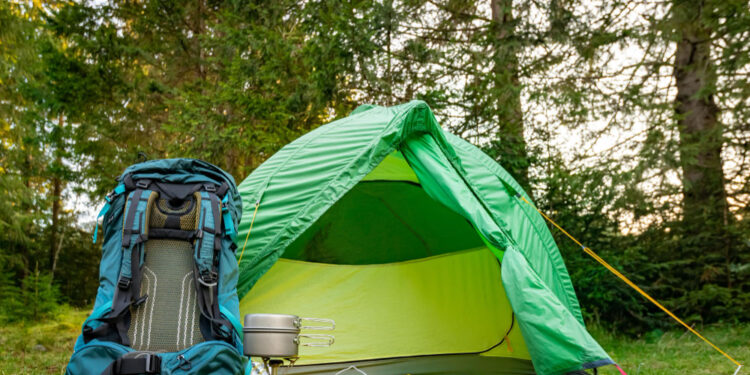The Philippines is home to breathtaking biodiversity, from the peaks of Mt. Pulag to the coastal mangroves of Palawan. As the popularity of camping grows, so does the responsibility to protect these unique environments. Sustainable camping gear in the Philippines allows campers to enjoy nature while minimizing their ecological footprint. True sustainability is about material choice, production ethics, and gear longevity.
Shelter and Sleep: Ethical Materials
The biggest pieces of your kit offer the most opportunity for sustainable impact by choosing materials that are less taxing on the planet.
Tents and Tarps: Recycled and PFC-Free
When shopping for shelter, look for fabrics made from recycled polyester (rPET) or nylon, which repurposes plastic waste into durable fabric. Equally important are the coatings: choose tents and tarps that use PFC-free Durable Water Repellent (DWR). PFCs (perfluorocarbons) are persistent chemicals that pollute Philippine water sources and accumulate in the atmosphere, increasing air temperature.
Sleeping Bags and Pads
For sleeping bags, prioritize synthetic fills derived from recycled materials over virgin polyester. When considering longevity, the best sustainable choice is durable equipment that can be repaired, extending its life. Longevity and repairability are crucial sustainability factors for gear exposed to humidity.
Local Alternative: The Banig
A truly local and sustainable option for ground defense is the traditional banig (woven mat), particularly those made from natural, fast-growing materials like buri or pandan leaves. The banig is natural, highly repairable, and biodegradable, making it a perfect, low-impact ground layer to supplement a modern sleeping pad.
Kitchen and Cooking: Waste Reduction
The kitchen is where the principle of Leave No Trace is most challenged. Zero-waste cooking gear is the path to better stewardship.
Fuel and Stoves
While the tradition of building a wood fire exists, using lightweight canister stoves is far more eco-friendly in high-traffic or protected areas. Stoves reduce environmental scarring and eliminate soot pollution. If using canisters, commit to recycling empty containers responsibly; never discard them in nature.
Reusable Dishware
Ditch the disposable plates and plastic cutlery. Invest in a dedicated, lightweight mess kit made from bamboo or stainless steel. These materials are durable, easy to clean, and avoid the microplastic waste generated by single-use items. Look for locally-made bamboo utensils to support local artisans.
Water Filtration
One of the greatest contributors to plastic waste is water bottles. Using a filter or purifier is non-negotiable camping gear in the Philippines. By relying on natural water sources and purifying them, you eliminate the need to haul dozens of single-use plastic bottles, drastically cutting your personal waste generation.
Personal Essentials: Conscious Choices
Even small items, from clothing to hygiene products, contribute to the cumulative impact on the environment.
Clothing
Choose clothing made from recycled fleece, recycled nylon, or natural fibers like organic cotton and linen. The durability of outdoor apparel is key: investing in well-made pieces that last is inherently more sustainable than buying fast-fashion gear.
Lighting
Ditch single-use alkaline batteries. The best sustainable lighting option is rechargeable battery-powered LED lanterns or solar-powered lights. Solar lights are perfect for the sunny Philippine environment, ensuring you have reliable, zero-emissions light without generating hazardous battery waste.
Hygiene and Waste
To protect streams and rivers, use biodegradable soaps and toiletries. Consider solid shampoo bars, solid toothpaste, and natural insect repellents. Always adhere to the “Leave No Trace” principle, which requires packing out everything you pack in—including food scraps and hygiene waste.
Site Selection and Camp Management
Even the best sustainable camping gear in the Philippines can fail if you set up in the wrong spot or manage your camp poorly. Sustainability starts with smart choices on the ground.
Location is Everything
Always use established campsites, avoiding the creation of new trails or fire pits. Never pitch your tent in a depression or at the bottom of a slope, as these areas are natural drainage channels that will turn into pools as soon as the rain starts.
Trenching and Drainage
In many local campgrounds, digging is discouraged. Instead of trenching, rely on your tarp and footprint combination, along with natural features like rocks or logs, to passively divert water away from your tent base. Minimizing ground disturbance preserves the integrity of the soil.
Mud and Moisture Control
Establish a designated “wet zone” outside your tent to manage muddy gear. Never bring wet items inside the sleeping area. Take extra care to air out damp gear every morning, as prolonged dampness encourages mold growth and reduces lifespan.
Key Takeaway
Sustainability in camping gear in the Philippines means prioritizing recycled materials, choosing long-lasting, repairable equipment, and adopting minimalist, zero-waste practices. By consciously choosing your tools and managing your camp responsibly, you ensure that the trails, mountains, and unique natural spaces we enjoy remain pristine for future generations of Filipino nature lovers.

















